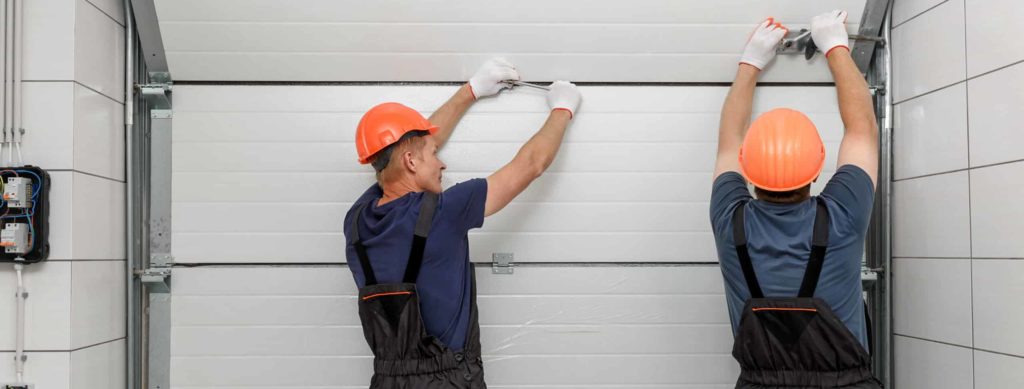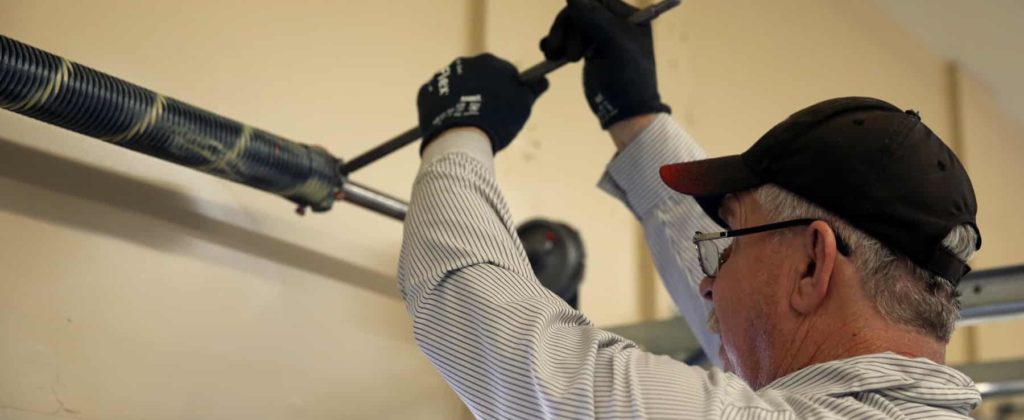At Garage Door Repair we have years of experience helping homeowners repair and maintain their garage doors. Although maintaining your garage door can seem like a daunting task, it’s actually quite simple if you have the right knowledge and tools. In this guide, we will break down all the essentials of garage door maintenance, providing you with a step-by-step approach to keep your garage door in top condition.
Regular garage door maintenance is not just about keeping it operational; it’s about ensuring the longevity of your investment and safety for your home. Here, we share the secrets of professional garage door services to help you master the art of maintaining your garage door.

Why Garage Door Maintenance Matters
Your garage door is one of the most essential pieces of your home’s exterior, offering protection, insulation, and convenience. But, like any other mechanical system, it can wear out over time. By carrying out regular maintenance, you can significantly extend its lifespan, prevent unnecessary repairs, and ensure the safety and security of your home.
Unsure where to start? We’ve got you covered. Whether you’re a seasoned DIY enthusiast or a homeowner looking to learn more about maintaining your garage, our guide is designed to help you understand the intricacies of garage door maintenance
Understanding the Basics: Garage Door Tune-up
A garage door tune-up isn’t as complex as it sounds. This involves a series of inspections, minor repairs, and adjustments that ensure your garage door operates smoothly. A proper garage door tune-up can help identify potential issues before they escalate into major problems.
Start by visually inspecting your garage door. Look out for signs of wear and tear on the springs, cables, rollers, and pulleys. Remember, never try to repair the torsion springs yourself; they are under high tension and can cause severe injuries if handled incorrectly. Always seek professional assistance for spring-related issues.
Next, test the balance of your garage door. If your garage door is not properly balanced, the door opener will have to work harder, reducing its lifespan. To test the balance, disconnect the opener by pulling the release handle (usually a red cord), and manually move the door about halfway up. If it doesn’t stay put, the counterweight system (springs) is improperly balanced. If this is the case, you may need a professional to adjust it.
Garage Door Maintenance Preventative Measures
While understanding the basics of garage door maintenance and troubleshooting common issues are crucial, prevention is always better than cure. A preventive approach can help you avert garage door problems before they become substantial issues. Here are a few tips:

Regularly lubricate moving parts
Regular lubrication of the moving parts of your garage door is a crucial maintenance task. Lubrication reduces friction, which in turn helps the door operate smoothly and quietly, and extends the lifespan of the moving parts. Here are some guidelines:
Type of Lubricant:
Use a high-quality silicone or lithium spray lubricant. Do not use a heavy oil or grease, as these can collect dust and debris, leading to a sticky buildup that can cause issues over time. Avoid WD-40 for garage doors, as it’s a cleaner rather than a long-term lubricant.
What to Lubricate:
- Springs: These do most of the heavy lifting in your garage door mechanism. Spray them lightly, ensuring all parts have a thin layer of lubricant.
- Rollers: Apply lubricant to the rollers, but be careful not to get any on the track. Ensure the lubricant penetrates the rollers well. If your rollers are nylon, make sure to only get lubricant on the bearings as too much lubricant can degrade nylon over time.
- Hinges: Lubricate the hinges, paying particular attention to the hinge pivot points. However, avoid lubricating plastic parts as some lubricants can cause plastic to break down over time.
- Tracks: You should not lubricate the tracks, but you can clean them with a damp cloth. If they’re particularly dirty, you can use a solvent like brake cleaner. After cleaning, wipe them down with a dry cloth.
Keep the tracks clean
Clean the tracks on either side of the door to ensure they’re free from debris, which can obstruct the smooth movement of the door.

Test the Garage Door Balance
If your garage door is not properly balanced, the door opener will have to work harder, and it won’t last as long. To test the door balance, you need to disconnect the opener by pulling the release handle (usually a red cord), then manually move the door about halfway up. If it doesn’t stay put, the counterweight system (springs) are improperly balanced. This is a task for a professional.
Tighten Up the Hardware
Before you start tightening any hardware, it’s a good idea to visually inspect all the components of the door system to see if anything looks loose or out of place.
Track and Roller Brackets:Check all the brackets that hold the track to the wall and the brackets holding the rollers. These brackets are under high tension and are usually attached with a bolt and nut. If you find any that are loose, tighten them with a wrench.
Hinges:Check the hinges that hold the sections of the door together. If they’re loose, tighten them with a screwdriver. Be careful not to over-tighten, as this could strip the screw hole or damage the hinge.
Springs, Cables, and Pulleys:The springs, cables, and pulleys of your garage door are under a lot of tension and can be dangerous to adjust if you’re not experienced. If you notice any loose hardware in these components, it’s a good idea to call a professional to address the issue.
Garage Door Opener:If your garage door opener is mounted to the ceiling, check the mounting hardware, including the brackets and screws. Tighten any loose screws or bolts.

Inspect and Replace the Rollers
The rollers, whether steel or nylon, need to be inspected twice a year and replaced every seven years or so, and even more if you use your garage door many times a day. Worn, chipped, or cracked rollers should be replaced as soon as possible.
By replacing worn, chipped, or cracked rollers, you ensure the continued smooth and efficient movement of your garage door. This proactive maintenance measure not only prevents potential operational problems but also contributes to the overall safety and longevity of your garage door system.

Check the Cables and Pulleys
High-tension cables, over time, can experience wear and tear due to the heavy loads they bear and the constant movement of the garage door. When cables become worn or weakened, they pose a significant risk as they may snap under the extreme tension. A snapped cable can lead to sudden and uncontrolled movements of the garage door, causing serious injury to people or damage to property.
To ensure the safety of you and your loved ones, it is imperative to have a professional technician inspect the cables and pulleys regularly. These trained experts possess the knowledge and experience to identify early signs of wear, fraying, or other forms of damage that could compromise the integrity of the cables.

Check the Auto-Reverse Safety Features
There are two mechanisms: mechanical and photocell. To test the mechanical feature, place a piece of wood or a brick on the ground in the path of the door. When the door coming down touches the object, it should reverse direction. To test the second, the photoelectric system with beams at each side, close your door and just pass your leg in the door’s path. Your door should reverse.

Schedule professional tune-ups
Even with regular at-home maintenance, having your garage door professionally inspected annually can help catch potential issues before they become serious. Contact Garage Door Repair today to schedule an appointment with our expert technicians. Experience the difference of professional service and restore your garage door to its former glory.
Troubleshooting Common Garage Door Problems
Despite regular maintenance, you may encounter some common garage door problems. Don’t worry, we’re here to help. Here’s how to handle some of these issues.
Garage Door Not Closing Properly
If your garage door doesn’t close all the way, there are several possible causes, such as misaligned sensors or obstructions in the garage door’s path. Learn more about what to do when your garage door won’t close all the way.
Manual Garage Door Operation
There may be times, due to power outages or mechanical issues, when you need to operate your garage door manually. Understanding how to do this safely is essential. Discover how to reset and open your garage door manually with our guide on how to reset a garage door after opening it manually.
Conclusion
Maintaining your garage door might seem like a daunting task, but with a little knowledge and regular attention, you can ensure it works smoothly for years to come. Remember, while DIY maintenance can handle minor issues, some tasks should be left to professionals. Our professional and friendly team at Garage Door Repair is always ready to assist you with all your garage door needs.
Garage door maintenance is a valuable task that not only ensures the longevity of your garage door but also contributes to your home’s overall safety and efficiency. Whether you’re a seasoned homeowner or just getting started, a well-maintained garage door is a cornerstone of a well-kept home.

